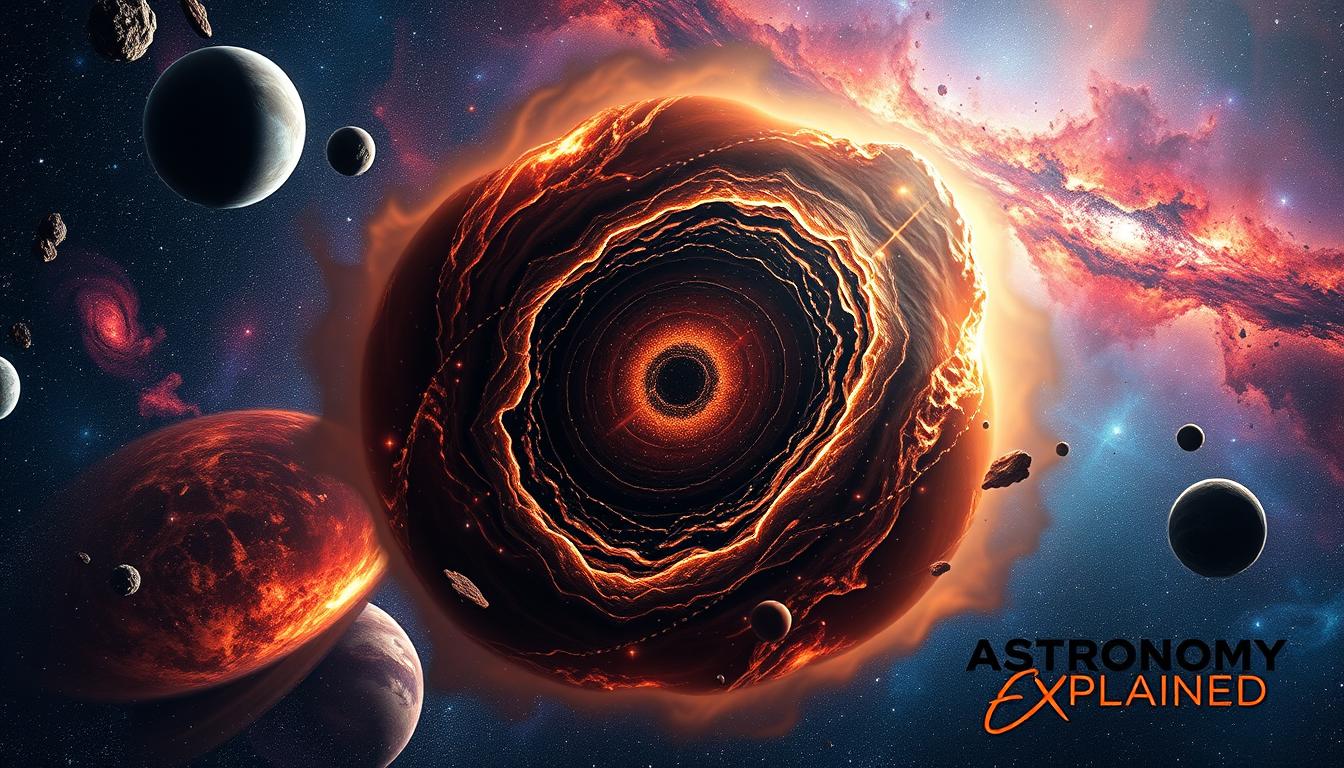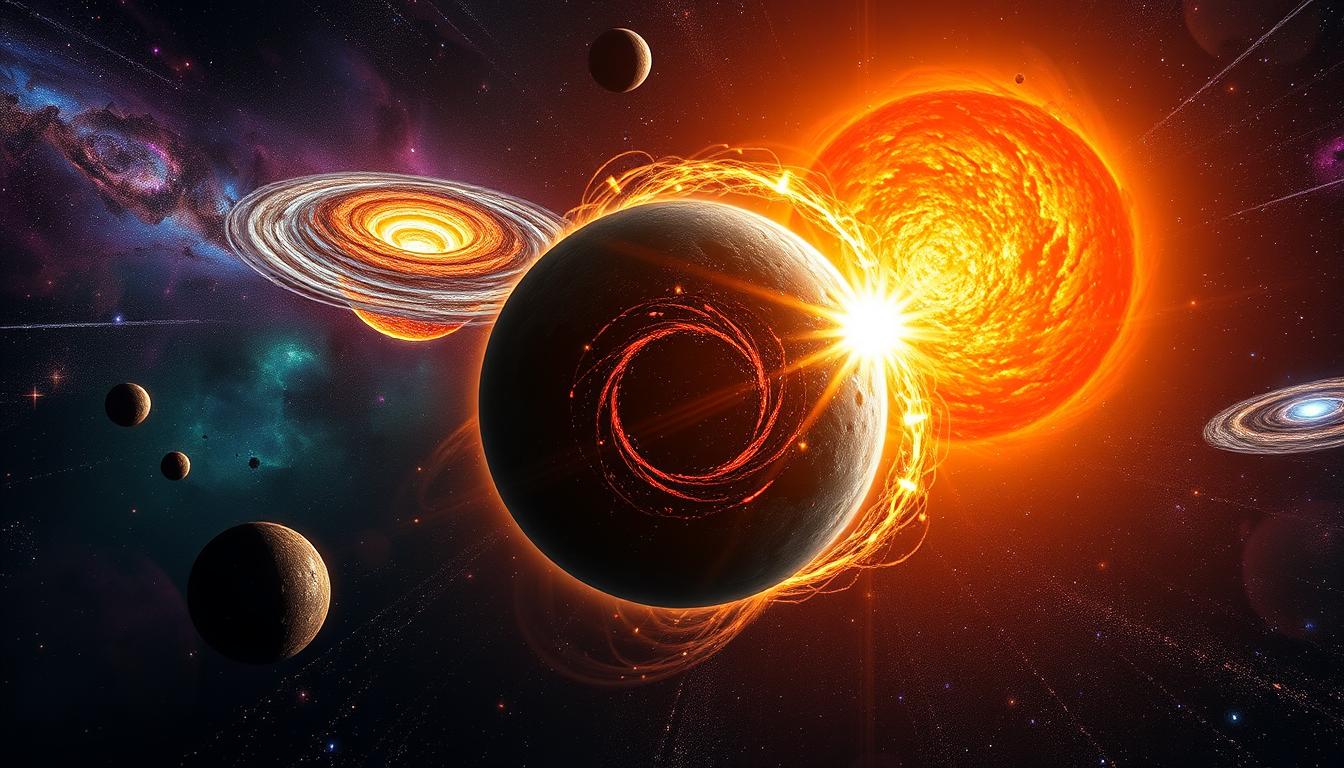Can a tiny speck in space weigh more than a mountain? Neutron stars can. They are a cosmic mystery that has huge amounts of dense but is essentially small in size. Imagine a city-sized object so dense a sugar cube of it would weigh 1 trillion kilograms on Earth. That’s how big is a neutron star.
The level of size and mass neutron stars has is something we don’t have here on Earth. That’s why we don’t have its concept in our minds. These stars are incredibly dense, with a mass over half a million times Earth’s. However, they are not bigger than an average city. Calculations for neutron star measurements show us more and more every time we catch one. They are massive and have a mass over twice that of our Sun. They are only 20–30 kilometers in diameter. Their density is over 100 trillion grams per cubic centimeter.
Check this out, too: What is Astrophysics, and Why It Matters?
Understanding neutron star diameter is more than just numbers. They come in different forms, like pulsars and magnetars, each with unbelievable properties, size, and mass. When they merge, like in GW170817, they create even more intriguing environments that can answer questions for quantum physics.

Understanding Neutron Star Dimensions
When we ask, “How big is a neutron star?” we need to look more than their size. We also need to look at their mass. Because that’s what makes neutron stars interesting enough to study. Neutron stars are about 20 kilometers (12 miles) wide – it is essentially quite small on the astronomic scale.

Despite their small size, neutron stars have incredible gravity and magnetic fields. Their mass is often 1.4 times that of the Sun. This is packed into a tiny area, so it becomes extremely dense. It can create newer things in the universe when they form after supernovae.
The Scale of Neutron Star Size
As I said, since we don’t have anything like neutron stars here on Earth, it’s hard to picture them in our minds. We generally don’t understand what a 20-kilometer-wide star having mass 1.4 times more than our Sun means. For reference, the Chicxulub meteor that killed the dinasours was 9-kilometer wide that left a 150-kilometer wide crater.
A small amount of neutron star material would weigh a huge 100 million tons on Earth. Imagine those small Smart cars for one person. They look small and shouldn’t weigh too much, right? Now, instead of them being light, if they had so much mass that was heavier than the entire Earth (of course, technically, that is not possible, but as an example), imagine the problems it can create when it hits a pedestrian, car, or anywhere. That’s how dense neutron stars are.
That’s why when you ask, “How big is a neutron star,” it’s not the size that is going to shock you. It’s how heavy a neutron star will shock you.
How Big is a Neutron Star – Impressive Stellar Measurements
Neutron stars have a huge mass, about 1.5 times our Sun’s. Yet, they are only about 20 kilometers wide. That’s like the length of Manhattan packed into a cosmic giant. As you can see, neutron stars are incredibly dense. They are mostly made out of neutrons; about 95% of these stars are neutrons. They are the densest and smallest stars we know. Their magnetic fields are also incredibly strong, a billion to a million billion times Earth’s.

These fields can create giant gamma-ray flares. One burst can release as much energy as the Sun in 300,000 years. They send out signals as pulsars and create gravitational waves in star mergers. The more we study neutron stars and neutron star measurements, the more we understand extreme matter and the universe’s heavy elements, like gold and platinum.
NASA’s Neutron Star Interior Composition ExploreR (NICER) mission is studying these stars. It looks at the X-rays they emit. Each discovery helps us better understand these mysterious objects.
Formation of Neutron Stars: Birth From Supernovae
Neutron stars form when a massive star dies. When stars with 8 to 30 times our Sun’s mass die, they become supernovae at the end of their life. When these stars run out of fuel, their iron-rich cores collapse under gravity, causing a supernova explosion. Supernovae explosions are big explosions that don’t happen often in the universe.
From Massive Stars to Stellar Cores
The core of the star collapses during the supernova. This is what creates the neutron stars and is a crucial part of the neutron star formation process. The core’s iron reaches a point where it can’t resist gravity anymore. Temperatures soar to over 5 billion degrees Kelvin, changing the star into a dense core.
Once that phase is over and the star dies, the object that is created is a neutron star. Since it is after an explosion and collapses under gravity’s power, it stays small, not much bigger than 20 kilometers in diameter. However, since gravity plays a crucial role, the density is huge and has more mass than our Sun. This extreme compression makes it one of the densest places in the universe.
Observations show neutron stars have high speeds and strong magnetic fields. These conditions might even create elements like gold. The neutron star mass is key to what happens next. If it’s too light, it stays a neutron star. But if it’s too heavy, it might turn into a black hole.
Conclusion
The question of how big is a neutron star is easy to answer. Neutron stars are about 20 kilometers big. However, it’s not their size that’s mind-boggling – it’s their mass. These stars are quite dense, as massive as our Sun. Their density is so high that a small amount of their material weighs about 10 million tons.
Thanks to science and tools like NICER, we can see how small neutron stars are compared to their huge mass. When neutron stars collide, they send out gravitational waves and help create heavy elements. So, with that small size and huge amount of mass, they open a new way for us to research the heavy elements and other mysterious things in the universe.
Recently, scientists have gotten better at measuring the neutron star mass, size, and how they work. This knowledge helps us understand how atoms behave under extreme gravity. With that information, the famous Collider in Bern can have better, more direct, and focused research about how atoms move and behave.
FAQ
How Big Is a Neutron Star?
A neutron star is about 20 to 30 kilometers wide. Yet, it weighs as much as 1.4 suns. Imagine a small city but with the mass of our Sun.
What Are the Dimensions of Neutron Stars Compared to Earthly Objects?
Neutron stars are huge compared to everyday things. For example, all U.S. cars could fit in a tiny cube if they were as dense as a neutron star. The whole human population could fit in a slightly larger space.
How Does a Neutron Star Form?
Neutron stars come from supernovae when massive stars run out of fuel. The core collapses, turning protons and electrons into neutrons. This creates a neutron star.
What Happens to a Neutron Star Over Time?
Over time, a neutron star cools down. If it’s in a binary system, it can heat up by accreting matter. This can lead to X-ray emissions and even X-ray bursts.
What Role Do Neutron Stars Play in the Universe?
Neutron stars are important in the universe. They can be pulsars, emitting beams of radiation. Neutron stars also create gravitational waves when they merge with other objects. They offer a unique environment for studying extreme physics.
Are Neutron Stars Hot?
Yes, neutron stars can be very hot when they form. Their surface temperatures can be over 1 million Kelvin. They cool down over time but can be reheated by accretion. Their core remains very hot, even when the surface cools.